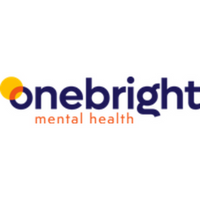6 ways employers can help employees suffering from SAD
For many people, the transition from summer to autumn can be difficult to navigate as the days get darker and the weather gets colder. Three in 10 adults will experience Seasonal Affective Disorder (SAD) over the coming months, a form of short-term depression that typically affects people more in the winter than summer.
SAD influences levels of neurochemicals (melatonin and serotonin) in the part of the brain controlling mood. Within the workplace, those who suffer from the disorder can experience a lack of energy, difficulty concentrating, feelings of wanting to withdraw from work productivity, burnout, sadness, guilt, or hopelessness.
More businesses are implementing initiatives and services to help support employees, including those who are trying to cope with SAD. Sometimes it’s the small things that make the greatest difference.
Here are some ideas for small workplace changes that will support employees who suffer from SAD and promote good mental health.
1. Educate employees and managers
Educate the workforce on the effects SAD has on productivity and encourage employees to seek help.
An organisation can start by reducing the stigma surrounding SAD and training managers and the workforce on how to start a conversation if they are concerned about an employee.
SAD Sufferers can learn to recognise the signs and how it affects them, such as a strong desire to sleep and eat.
2. Refreshments and the great outdoors
Encourage employees to get outside during daylight – perhaps by taking a short walk at lunchtime, or by holding team meetings outside, or just sit, rest and enjoy the outdoors. Diet is also important, so encouraging employees to eat a healthy, balanced diet is good for fuelling balanced energy levels.
3. Manage stress
A culmination of tight deadlines at work, home stressors and SAD could push stress levels into overdrive. Promote self-care and emphasise work/home boundaries to help employees recognise and manage issues of conflict, friction and raised anxiety.
4. Internal communications
Include content about SAD in company newsletters and other employee communications. Identify someone at a senior leadership level who might have experienced SAD and is willing to talk about it. This helps to normalise the experience.
5. Tea and chat
Set up a weekly tea and chat meeting for teams and departments outside of their usual break times, in a comfortable environment. Don’t forget you can do online, too, if your team is remote. Grab some biscuits, a warm drink, and talk about something neutral.
Conversation starters:
- Hobbies
- Their weekend or after-work plans
- What made them smile today
- New books, films, or TV series
- Their favourite foods and recipes
6. Create a mental health first aider
Enrol one person (or several if you have a big team) to be a mental health first aider. By providing peer-to-peer network support within your organisation, you are creating an environment in which the individual may feel more comfortable to discuss any issues, including the effect of SAD on their work performance.
How cognitive behavioural therapy can help
Alongside the steps outlined above that employers can take to help employees combat SAD, Cognitive Behavioural Therapy is one of the evidence based treatments that help people cope with and recover from feelings of depression and anxiety.
Supplied by REBA Associate Member, Onebright
Onebright is a personalised on-demand mental healthcare company.








